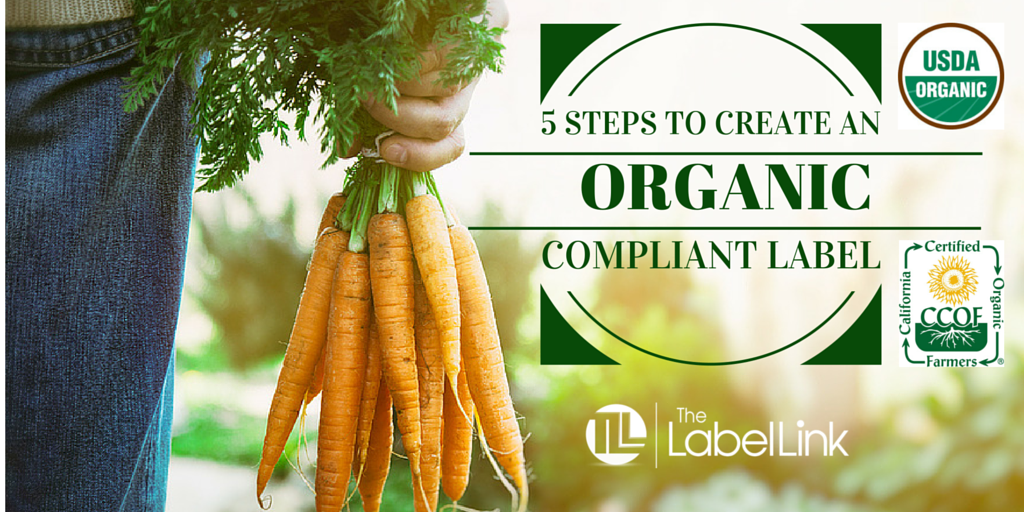
5 Steps to a Compliant Organic Label
The USDA has long laid down a heavy fist on how organic products must be labeled. Market confusion between natural vs. organic products is one thing to blame for all of the strict requirements.
As a food manufacturer, you better listen up to these requirements! Not doing so could cost you a fortune in label reprints and delays in moving your product to market.
If you’re in the process of designing your organic label, follow these five steps to save yourself time, money and avoidable headaches.
1. Ensure Your Ingredients Meet the USDA’s Requirements
Before you can claim your product is organic, it MUST meet the USDA’s requirements. There are three ways you can label your product as “organic.”
- 100% Organic: This is when each ingredient in the product is completely organic and the way it’s processed is organic.
- Organic: This is when 95% of the product is organic and any non-organic ingredients are on the National List.
- Made With Organic: This is when 70% of the product is organic and the natural or synthetic ingredients are on the National List.
This can get complicated. You must know the exact organic composition of each of your ingredients. The only ingredients you may exclude are salt and water.
2. Disclose the Agency Who Certified Your Product as Organic
On your label, you will also need to disclose who certified your product as organic. This should read, “Certified Organic by (Name of Certifying Agency).”
The only time you can use the certifying agency’s seal is if it says, “Certified Organic by (Agency Name).”
3. Show Your Organic Ingredients
Showing which ingredients are organic is especially important when labeling with “Organic” or “Made With Organic.” Writing “organic” in front of each ingredient can take up a lot of precious real estate on your label. Instead, you can use an asterisk next to each ingredient that’s organic and signal below what that asterisk means.
If you’re labeling “100% Organic” you do not need to list each ingredient as organic. It’s implied.
4. Make Sure Your Statements Are Correct
This is where things get a little bit complicated. Anytime you make a statement on your label, you must ensure you’re making the correct claim. Here are a few examples:
1. If you’re making percentage statements using graphics:
2. If you’re making the claim that your product is x% organic, there are certain requirements for how you display this percentage. These include:
- Uniform font (no bolding or italicizing of the font to make it stand out)
- Font size of ½ the size or less of the largest font in the logo or panel. For example, if you use 24 point font size in your logo, you must use 12 point font size in your percentage statement or smaller.
- Consistent font color.
3. If you’re using the “Made With Organic” claim:
You can use the “Made With Organic” statement anywhere on your label, but it must be no more than half the size of the largest font on your label and it must be in the same style as the other fonts. In other words, you cannot highlight it to make it stand out.
You must also follow up this statement with three actual foods or food groups.
5. Get the Final Stamp of Approval
Before you print bulk quantities of your organic label, it’s important for you to get the final stamp of approval from the certifying agency. Sometimes, the agency will request changes. If that’s the case, make the changes and then resubmit to the agency for final approval.
Question: How will you label your organic products?
The labeling requirements for organic products are stringent and sometimes tricky. It’s important to get help from people who understand how these labels work so you don’t risk wasting money on non-compliant labels.
